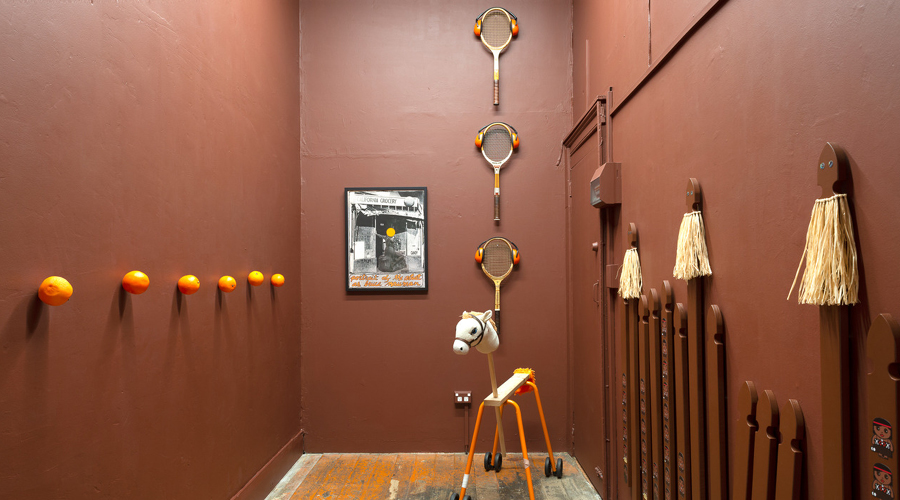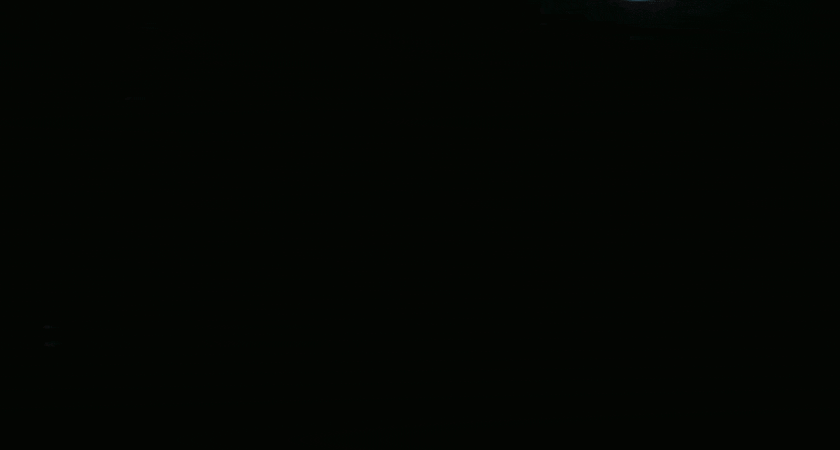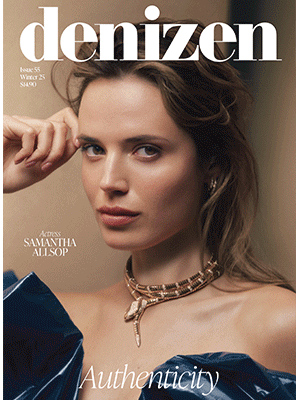A number of young artists in New Zealand are eschewing the ‘institution’ to pave intriguing pathways of their own. Together the small galleries they and their peers run are cultivating an intriguing art scene. We spoke with the creators behind three such galleries and discovered a trove of creative potential that had been right under our noses the whole time.
Sosâge
43C Dryden Street, Grey Lynn
“I feel like the Auckland art scene is this massive sandwich and we’re just the little filler,” Léa Charron tells me, analogising where she and her new artist-run space fit into the wider landscape of art in this city. “We’re not the bread, we’re not the meat, we’re the nice little sauce that brings it all together.”
I’m meeting the artist and co-curator Nick Jamieson, for a drink to ask them more about Sosâge, the space Léa opened in Grey Lynn. But it was she who posed the first question, asking — an antipodean-inflection offsetting her native French accent — “how did you hear about us?”
Sosâge had been on my radar since I had driven past the space a month or so before. Occupying a small spot on Grey Lynn’s Dryden Street, the gallery maintains a neutral palette in line with something one might expect from an art space. But don’t let its white walls fool you. Sosâge’s offering is different from the norm.
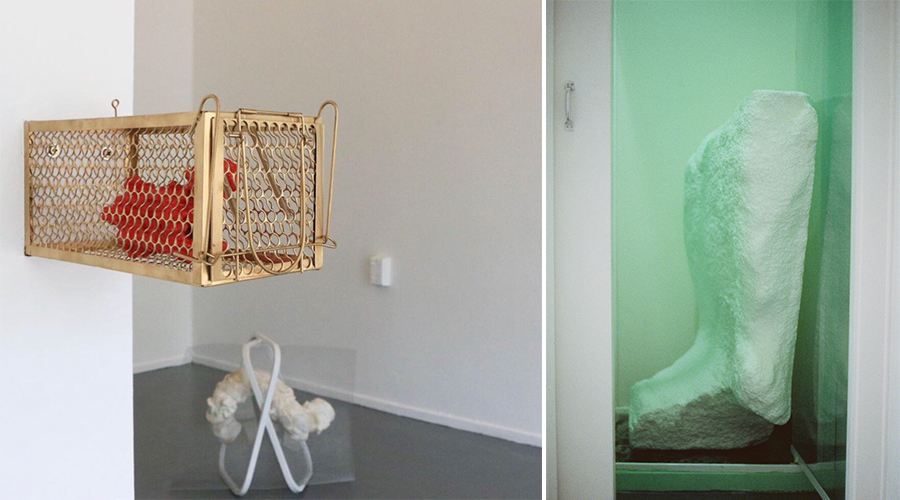
Starting with its unexpected location, somewhere Léa calls, “between the city and suburbia,” the beautiful rows of villas seem to stand in contrast to Sosâge’s experimental windows and rowdy openings. This was something Léa admits she was worried about at first, telling me how events at Sosâge would spill out onto the street. “Actually, the whole neighbourhood has been so supportive,” she tells me, “dropping in to see shows or just to say hi… some people have even bought pieces.” But for both Léa and Nick, selling art (while celebrated when it does happen) is not what necessarily drives them. “Sosâge is a space where things can happen,” Léa tells me, “it blurs the boundaries of a typical gallery space because people can just come in and say ‘hey, I’m an artist can I talk to you,’ and there’s a lot more flexibility around what can be done and the type of art we can show.” Nick agrees, before adding, “it was really important for us that even in the early days we disrupted the proposal system… there is such a huge disconnect between making ‘good’ academic art and making art that commercial galleries will sell, and I think that Sosâge is working to bridge that gap.”
Léa and Nick have a goal to give the art often overlooked by commercial galleries a chance. As Nick tells me, “lots of hyper-academic people make amazing art but they don’t really get shown,” following up by divulging that a bulk of the proposals they’ve received are from people who fit this mould.
Together, Léa and Nick will look through the proposals they are sent and try to decide the kinds of artists and shows that will work for the gallery’s programming. “Bouncing off each other is really helpful,” Nick says, “because our tastes are worlds apart.” Léa laughs, “it’s true.” Where Nick’s work is mostly clean, graphic and often digital, Léa’s is grounded in sculpture. Nick explains how the artist who was about to exhibit at Sosâge (Claudia Dunes), presented one of the first occasions that he and Léa had almost immediately and unanimously agreed.
In order to exhibit at Sosâge, Léa explains that it’s more about connecting with not only her vision but the overall vibe of the space, as well as bringing something different to the table. Passion and drive override saleability as the central criteria. “It’s totally about removing the barrier,” Léa says, “you don’t have to have 100 shows under your belt, you don’t have to have big people talking about your work, all you need is to be able to show that you actually care about what you’re doing.”
Nick agrees, “some people have a scattergun approach to sending out proposals, and while they’re good for context, we’ve found that actually meeting people is where the business is done.” And when the pair say that they’re open to having anything in the space, they mean it. “We’ve had performance, weird ceramic sculptures, music video releases, a fashion launch,” Léa says, laughing, “honestly you can do whatever the fuck you want, but for me, it’s more about why you’re doing it, and more specifically why you want to do it at Sosâge.” For Léa, the work she finds compelling is, in her words, “something a little bit challenging, bizarre or highly conceptual.”
That said, running a small gallery demands almost constant attention when it comes to remaining afloat, and no matter what the exhibition is, bills still have to be paid. “Is funding available?” I ask, to which Léa acknowledges that Creative New Zealand (the body responsible for funding a number of creative pursuits in this country) is overwhelmed by the volume of applications they receive. “It’s still very, very hard to get to the point where organisations like CNZ will recognise and believe in you,” Léa says, before Nick chimes in, “you have to prove yourself first and put on shows that impress them… it’s that paradox about being able to fund something long enough on your own and then seek funding… but the question is always, will you make it that far?”
Hearing Léa’s and Nick’s plans for the future of Sosâge, however, I feel confident that it will continue to build. For Nick, this includes establishing a solid public programme around the gallery. “I keep coming back to what Serpentine Galleries do in the UK,” Nick says, “they run amazing programmes and will pair shows with academic events and podcasts and videos… they get incredible people from outside the art world in to speak, like lawyers and scientists,” Léa enthusiastically agrees, “scientists! That’s the dream.” She continues, “I also think the online gallery idea is really cool because it would allow us to accommodate different kinds of art that only exist digitally… it also doesn’t require artists to produce anything that creates waste, which is an idea I’m drawn to.”
For these two, it’s the marriage of art and education that will carry the concept of Sosâge into the future. “That’s culture, you know?” Léa says, “being able to educate people through art towards different avenues and ways of thinking.” Nick concurs, “when you put them together, you can really reach an audience… yeah, that’s what we want.”
Mercy Pictures
6B Little High Street, Auckland CBD
The first thing I noted, walking into Mercy Pictures (after catching my breath from the six flights of stairs it took me to get there) was the lightness of the space. “You know, there is an elevator,” Jerome Ngan-Kee says, leading me into the gallery he started with partner Teghan Burt. On the walls hung pieces that Teghan explained as part of her Touching Each Other exhibition — canvases on which iPhone message threads had been blown up — casting the white-walled space in a stark, modern light.
“The way it kind of works in Auckland at the moment,” Jerome says, after I ask what inspired the duo to start their own gallery, “is that if you want to keep doing shows, you have to do them yourself.” It was after attending Elam together (The University of Auckland’s School of Fine Arts) and spending a number of years running other galleries that Jerome and Teghan decided to start Mercy Pictures, armed with a shared desire to create opportunities for themselves and their peers in what they saw as a small market. “As opposed to just sitting back and waiting for someone to give you a show,” Jerome continues, “you’ve got to help yourself. It’s just a more robust way to engage in art.” I ask whether the perceived lack of opportunity is simply a question of size, New Zealand is, after all, a small country. “It’s just one of those banal truths,” says Jerome, “it is small, and with that size comes inevitable limitations.” Regardless, this doesn’t seem to be slowing the pair down.
“The thing is,” ventures Jerome, “when you’re a young person making art, people often say ‘oh that’s a nice thing that you’re doing,” he cocks his head, imitating the kind of patronising expression he has probably encountered a number of times. “So when we started Mercy,” Teghan pipes up, “we wanted to do something that was perhaps a little more serious.”
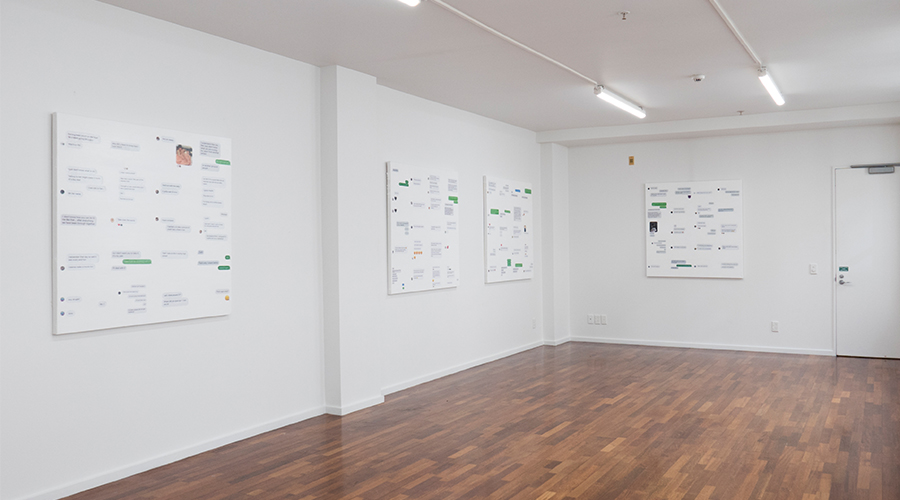
It’s a strategy that’s paying off. In 2018, Mercy Pictures hosted artist Amalia Ulman for her first solo exhibition in New Zealand. Ulman is the artist, if you remember, who made her name staging a piece of performance art on Instagram, where she adopted the persona of an aspiring ‘influencer’ on a quest for superficial perfection. Excellences & Perfections, as it was called, was eventually included in a group show at the Tate Modern, making Ulman the first ‘social media artist’ to be shown at a major institution.
Speaking about the artists they approach for shows, Teghan tells me that most of them do it “for the love of art,” which is also a nice summary of what seems to be this duo’s primary aim. “We’re not really driven by commercial imperatives,” Jerome tells me, “I mean the money would be nice but it’s not our main focus.” At the start of this year Mercy Pictures also held a group show curated by artist Rob McKenzie, that featured 22 artists from New York, “some of them were pretty massive,” Teghan tells me, like Bernadette Van-Huy — a big player in the New York art scene since founding Bernadette Corporation in the nineties.
But while the underlying imperative of Mercy Pictures is to share a love of art, I’m reminded not to underestimate how serious these two are, as Jerome explains their presence at the SPRING1883 art fair in Sydney. “The main way we fund Mercy Pictures is through selling art,” Jerome tells me, “as well as lump sum donations from patrons.” He articulates that Mercy Pictures is more like a dealer gallery than it is an artist-run space — the latter, a moniker they don’t feel aptly sums up what they’re trying to achieve. “We’ve both already run a number of artist-run spaces,” Teghan says with a laugh, “and so we wanted to move on to something different.”
This really comes back to the idea of being young and finding it difficult to get people to take you at your ability, not your age. “I feel like in other cultural spheres, young people seem to be empowered,” Jerome says, “but in art, I think a lot of young people don’t feel that.” For Jerome and Teghan, this comes down to the need for more education (at institutions like Elam) about the varied options available to young artists in the industry. “When I started at university, “Teghan tells me, “the head of Elam gave a speech where he said, ‘there are 100 of you, and only one of you will be an artist’… which might be the statistics… but if you go into the industry with that attitude then it just becomes like a luck of the draw thing.”
This narrow view is something that Jerome and Teghan wish would change. “Art can exist in a bit of an idealistic sphere,” Jerome says, “but people need to think about it practically too.” He goes on, “you can create art however you want and there are a number of things you can do to make it exist and survive,” explaining how, while there are, of course, struggles around creating opportunities, “you just have to be persistent.”
Persistence, it seems, has paid off for Jerome and Teghan. As Mercy Pictures continues to steadily build a reputation for itself in Auckland, the pair’s vision is to keep things steady and hopefully figure out how to turn the gallery into a proper, full-time job for them both.
Until then, people can still visit the light-filled, loft gallery on Little High Street if they’re looking to broaden their horizons. “It’s hard to know what people think,” says Jerome, “but I hope they view this as a good thing for Auckland.” Teghan adds, “people overseas say they like our programming, so that’s cool.”
Mokopōpaki
454 Karangahape Road, Auckland CBD
Tucked into Karangahape Road’s Ladies Mile, is a gallery making waves that belie its physical size. Mokopōpaki is, as its Associate Director and ‘Keeper of the House,’ Jacob Raniera tells me, “a commercial, dealer gallery” (as opposed to an artist-run space), something he deems necessary to be able to be successful and survive. And yet, walking into the space it feels devoid of the often stark commerciality that can come with the territory of being included in that breed.
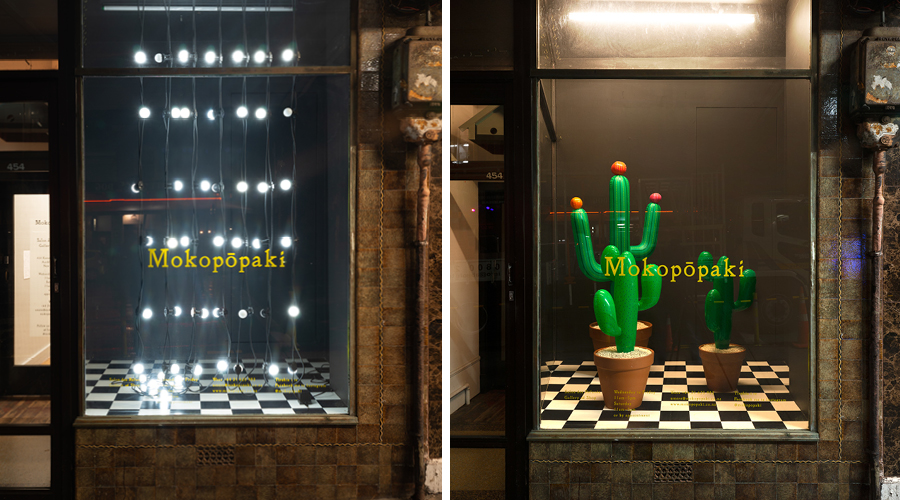
Mokopōpaki is inherently warm. It consists of only two rooms, set in a long, narrow space, and is not a place where you’ll find clean white walls or echo-y voids. “For us, changing the background that the art was to be seen on, changed how we looked at the art in the first place,” Jacob tells me, “the brown walls in the Brown Room… suggest both an actual and metaphoric shift in perspective.” Even the floors we’re standing on, he explains, are subject to artistic consideration, with artist Billy Apple removing the original vinyl flooring two years ago as part of his work Brown Room Subtraction. There is even an enclosed shower in one corner of the Brown Room, that Jacob says couldn’t be removed when they took over the space and as such, has been embraced as an active part of the exhibition experience.
The gallery is, as Jacob articulates, “an inclusive space with Māori ideas and values at its centre,” going on to explain, “we are a critical group or whānau who want to make ‘art for people’ accessible… we apply Māori approaches to exhibition-making and the production of artwork.” The artwork is cross-generational, experimental and is displayed in a way that makes it feel tangible to me, drawing me in with its presentation that is both raw and thoughtful.
“One of our main aims is to create an environment where everyone feels welcome and invited in,” Jacob says, which is exactly the effect the gallery has as I admire the various pieces that make up HĀTEPE, an exhibition organised by Roman Mitch. Jacob, walking me through the exhibition, points out various pieces that were made by artists’ family members — Te Kōkako and Te Kererū Māui, a pair of dolls that had been sent over from the UK by Jacob’s cousin Te Maari; woven tāniko by Dianne Rereina Potaka-Wade that was a gift to her daughter; an intriguing installation calledDecision-Making Bucket by Roman’s six-year-old son, Marcel Tautahi.
For Jacob, the idea of family lies at the heart of Mokopōpaki. “It is named after my Māori grandfather,” Jacob explains of the gallery’s unique moniker. “Pōpaki means ‘clear, fine night’… which may mean that my grandfather was named in celebration of a child or mokopuna born on a clear, fine night.” He goes on to explain how the Mokopōpaki logo also draws on abstract symbols borrowed from a Māori lunar calendar, underlining how “the light of the moon informs all that we do at Mokopōpaki… it’s our way of referencing, not only another logic or Māori-centric way of the world, but also demonstrates our commitment to women and women artists.”
In line with the way Mokopōpaki aims to ask questions and tell stories, Jacob explains how the gallery doesn’t accept random proposals, adopting a more collaborative approach to programming. “We want to show work that not only responds to the space,” he says, “but that also, in some way considers the core values that are at our centre.” Citing artists willing to embrace the unknown and explore experimental concepts as the kind that work well at Mokopōpaki, Jacob underlines why this gallery has established a reputation for what he calls, “promoting the wild card.”
Mokopōpaki has also collaborated with Te Tuhi, a contemporary art gallery in Pakuranga to present a series of works by local, anonymous artist PĀNiA!. It included her Pakuranga Customs House/Attitude Arrival Lounge, at which visitors were offered the opportunity to have their own, replica New Zealand ‘PĀNiA! Passport’ that was filled with their photo (quickly taken on a phone and printed on a portable printer) and stamped with the names of iconic international galleries — MoMA, Guggenheim, Tate Modern et al.
Just before I left Mokopōpaki, Jacob offered to issue me with my own ‘PĀNiA! Passport’, snapping a photo of me in front of Tiffany Thornley’s quilted piece, From the scraps of patriarchy I made myself anew and asking me to sign it before stamping it with the aforementioned insignia. Now, it sits on my desk, a daily reminder of the way that, as Jacob articulates, Mokopōpaki is seeking to take its unique, creative vision to the world.

